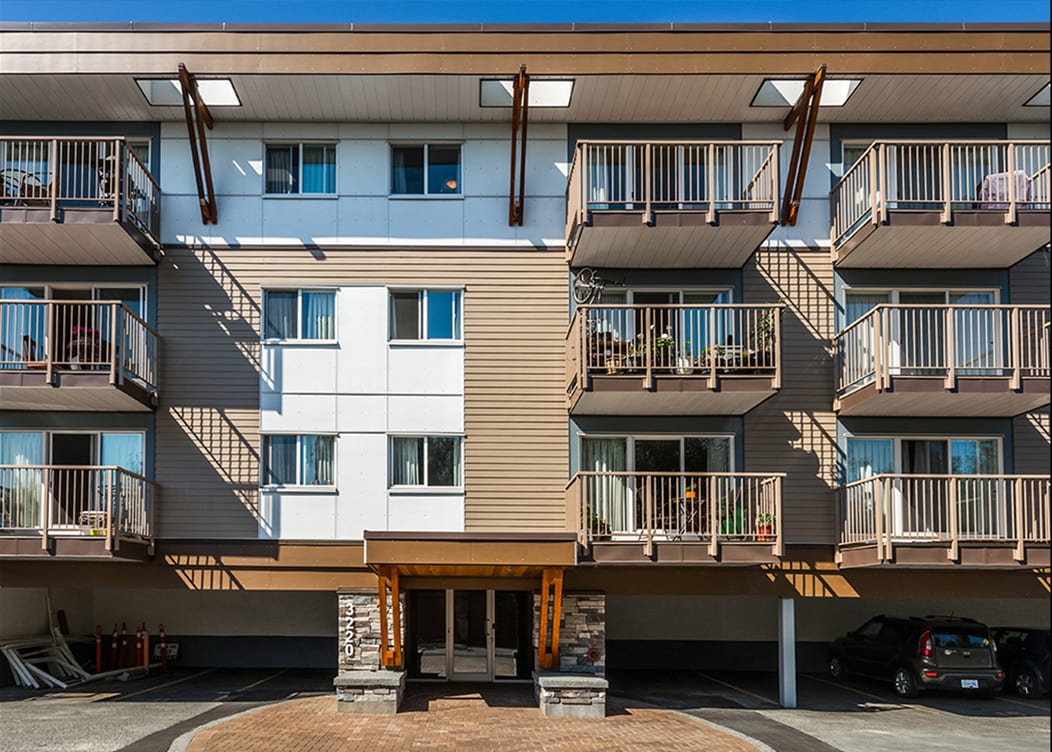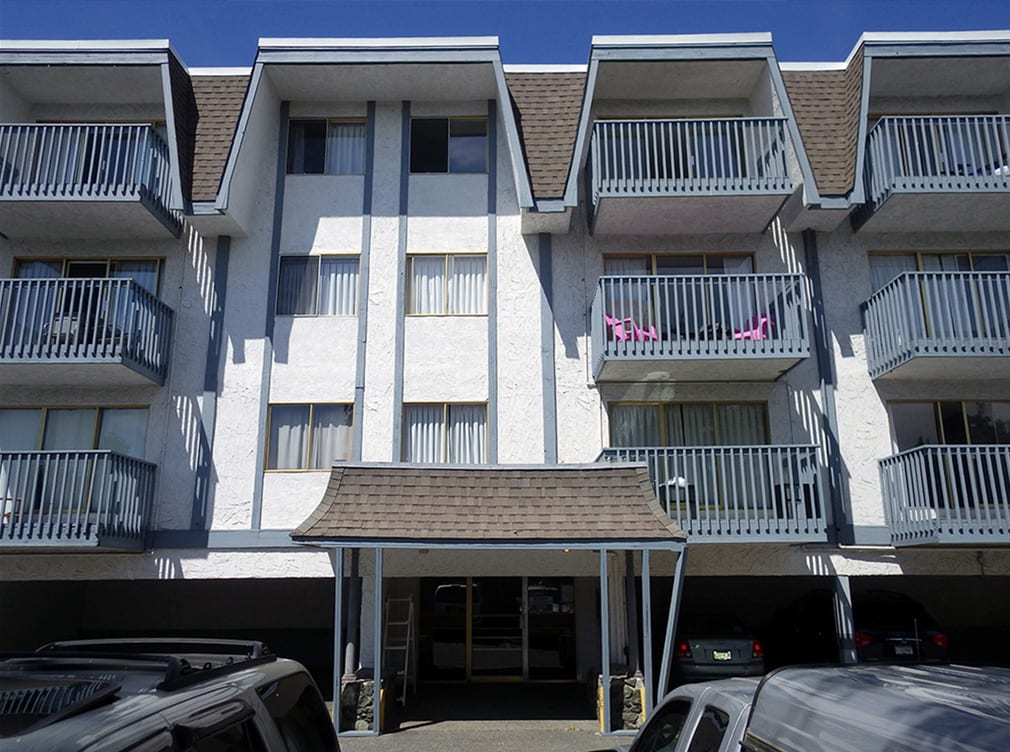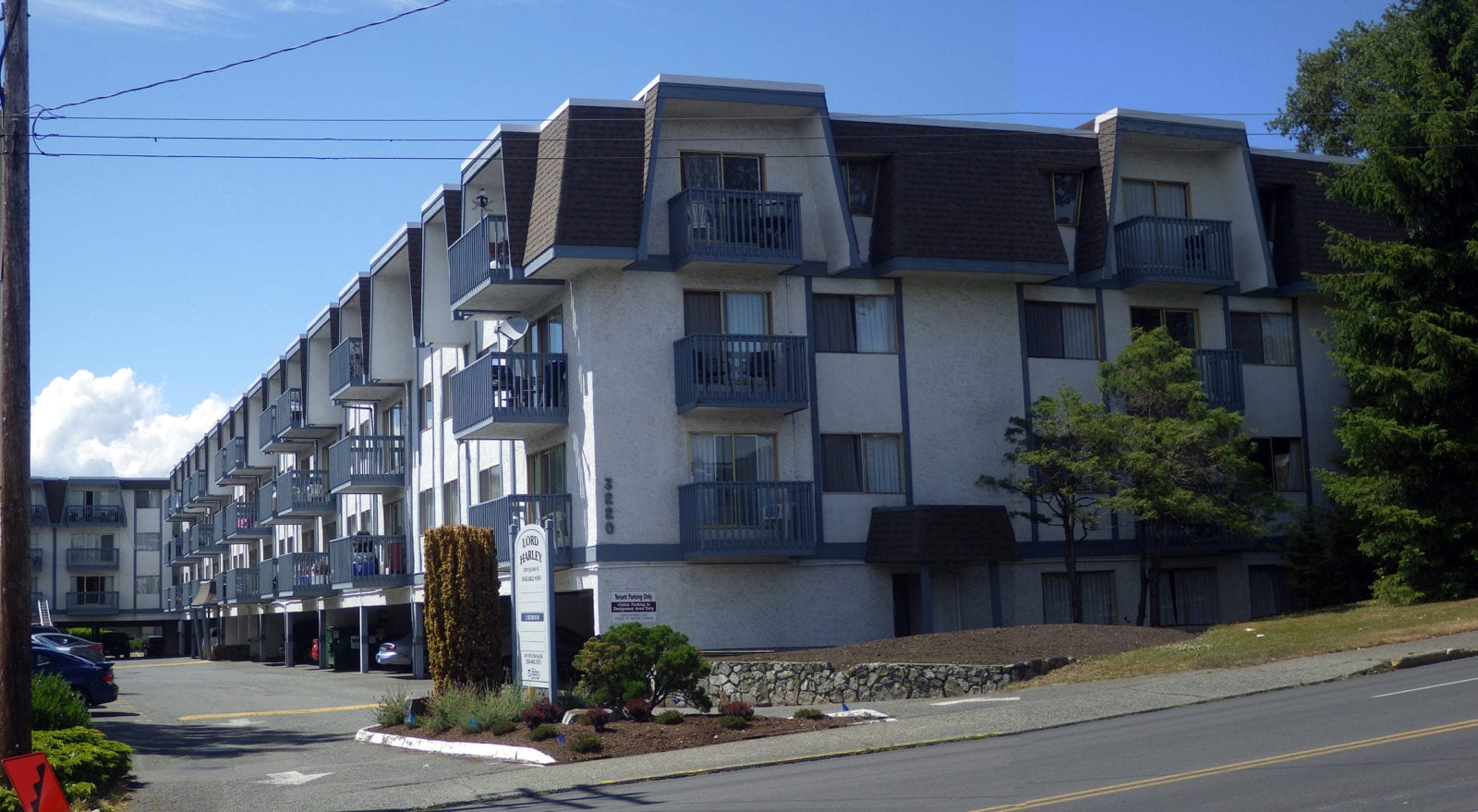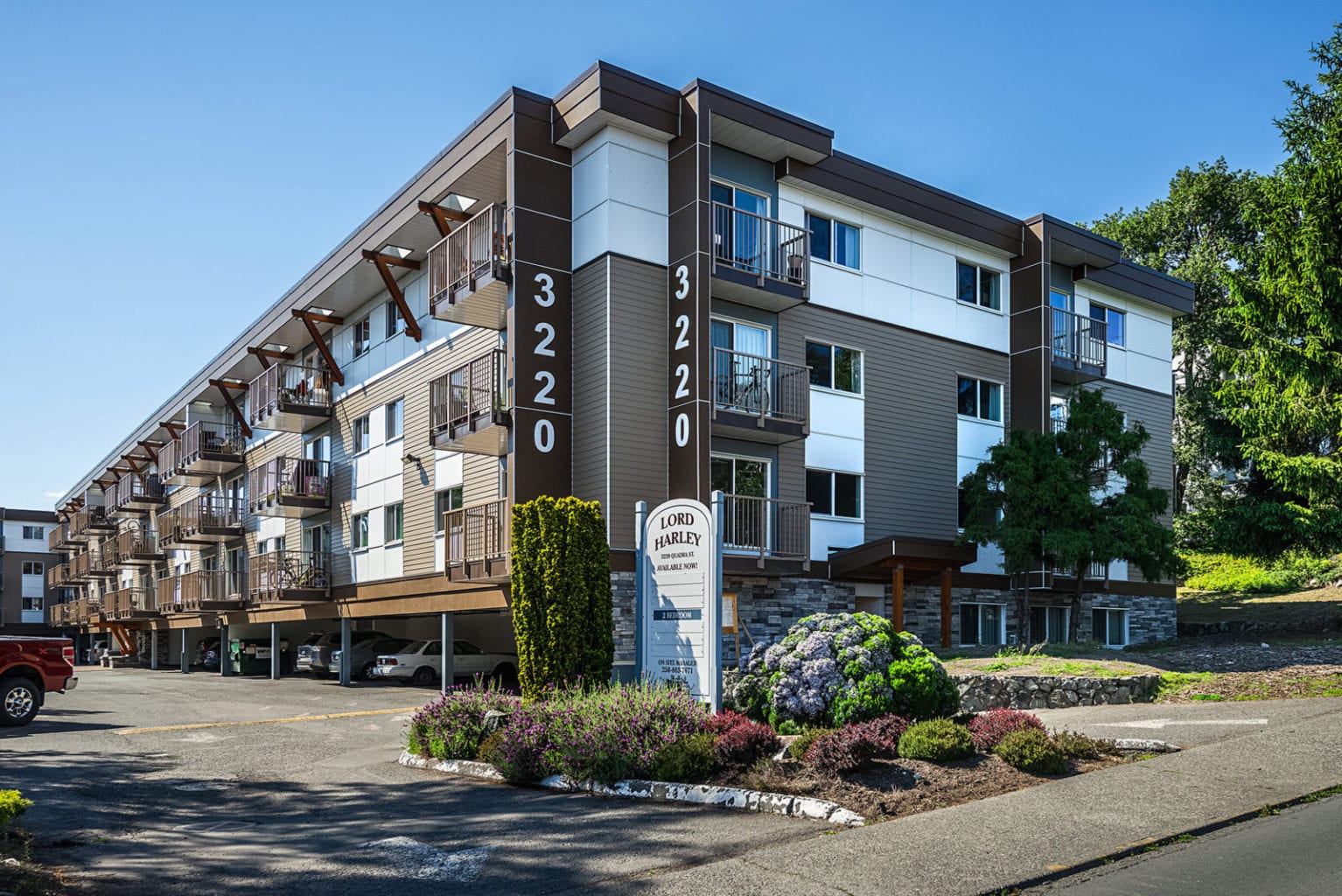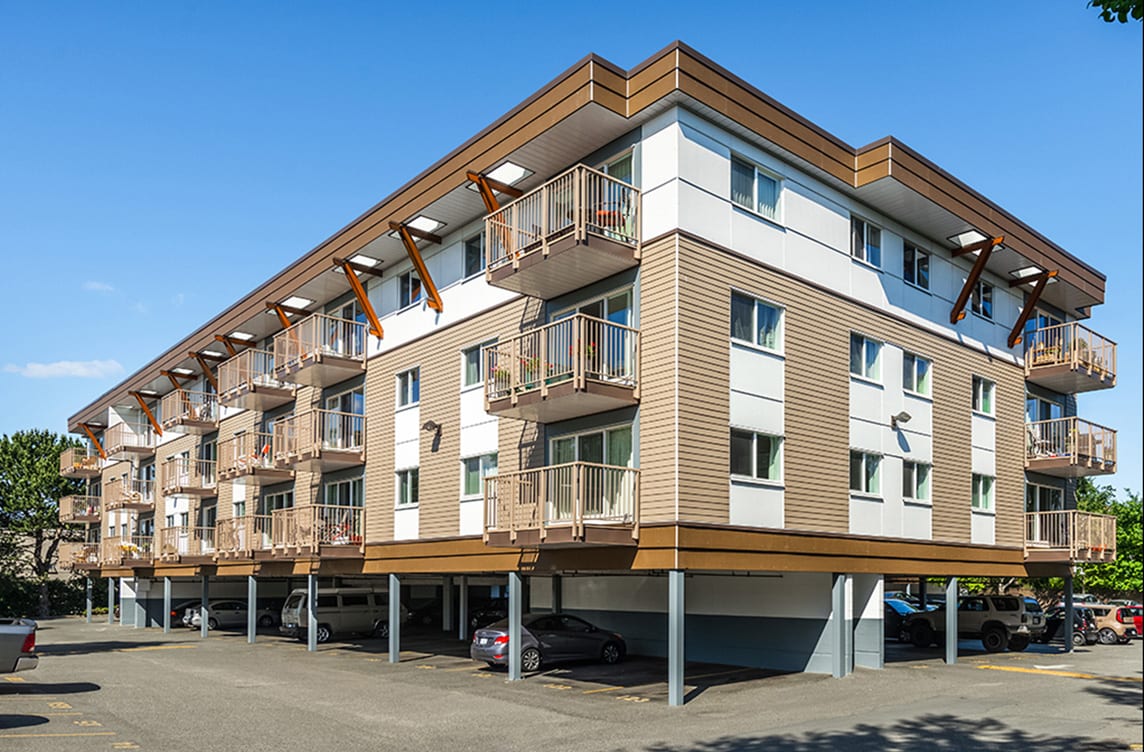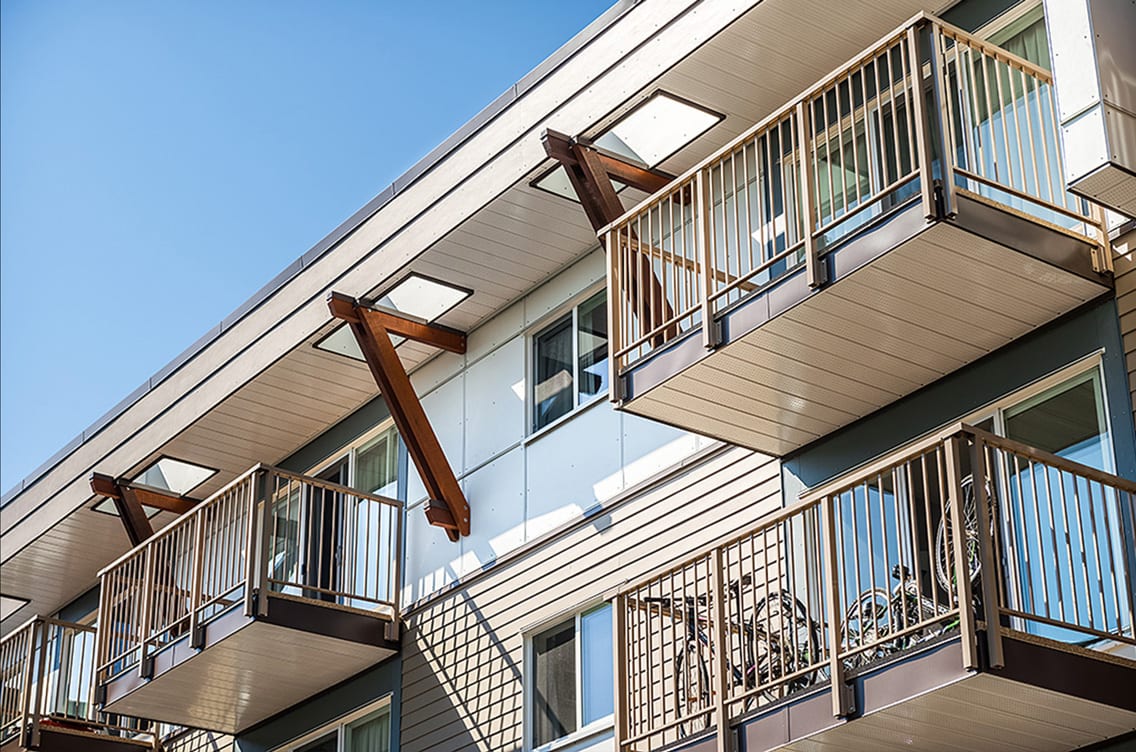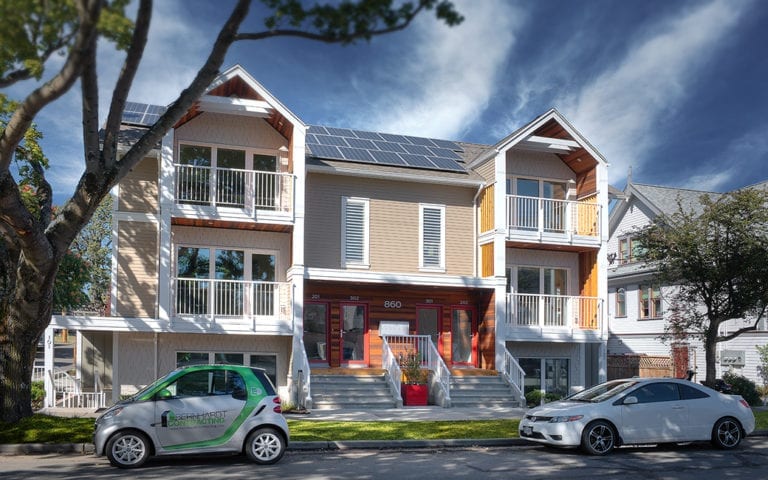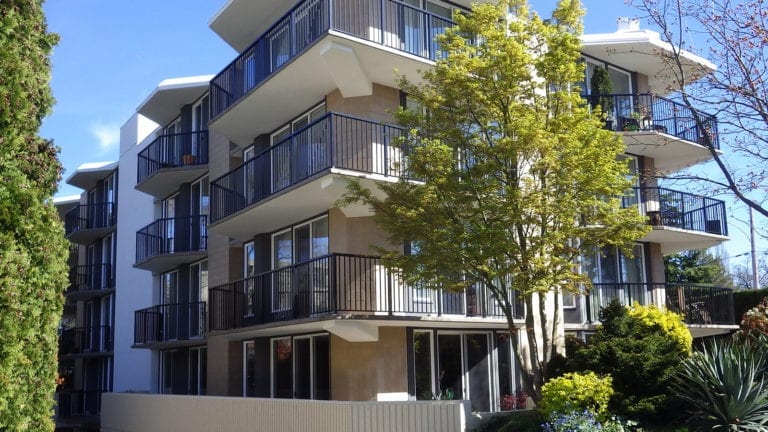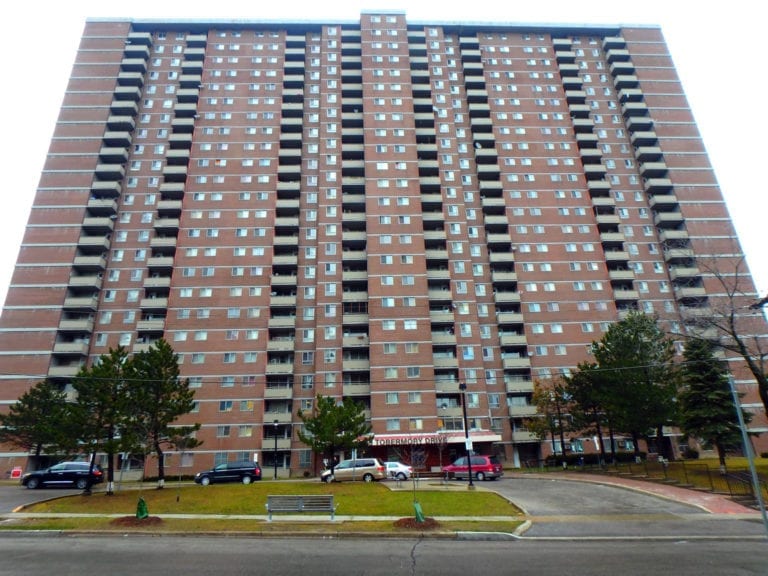The Lord Harley Apartments showcase how a comprehensive renewal project can breathe new life into an older existing building. The owners of Lord Harley, like many stewards of older buildings, found themselves caught in a cycle of one targeted repair after another. The 1970s low-rise rental apartment building was suffering from many of the common ailments of our aging building stock—bulging and deformed stucco, deteriorating balconies, prevalent condensation at the windows and sliding glass doors, and thermal drafts and leaks. To make matters worse, much of the heat from the aging shared central hydronic heating system was escaping through the poorly insulated building, and the owners were footing the bill.
As a first step, our team performed a building enclosure condition assessment to help the owners understand the extent and severity of the issues. Based on widespread evidence of water ingress and water damage, we made recommendations to renew the exterior cladding, windows and sliding glass doors, balcony waterproofing, and guardrails.
The comprehensive nature of the renewal project provided a unique opportunity to give the building a complete face-lift. Our in-house architectural team brought the building into the twenty-first century with new lines, materials, and colors. Our experienced project team knew that the most cost-effective opportunities for energy upgrading are during the replacement of end-of-life building components and equipment, so we introduced a basic energy analysis into the design of the new building enclosure.
As part of our energy analysis, we compared the incremental capital cost of various options that included adding exterior insulation to the walls, adding insulation at the roof, replacing the existing windows and sliding glass doors with more thermally efficient substitutes, and swapping out the old boiler for new high-efficiency boilers. This analysis enabled us to determine the “sweet spot” that would provide a substantial improvement in energy performance while meeting the owners’ expectations for a robust return on investment.
The building enclosure improvements included the addition of 2 inches of continuous exterior insulation behind the building’s new cladding that was enough to triple the insulating value of the exterior walls; the new thermally broken double-pane windows and sliding glass doors are an obvious improvement over the original single-pane units. At the roof level, new tapered insulation above the roof deck not only saves energy, but it also provides sloping to improve the roof’s once-problematic drainage.
In addition to the building enclosure improvements, continuous bathroom exhaust fans were installed to facilitate ventilation in the suites. We also helped the owners upgrade to high-efficiency condensing boilers for heating and hot water that were eligible for a utility incentive program rebate.
From the street level, the architectural presence of the building has been transformed with a reconfigured roof line and materials, textures, and colors configured to create a more human scale and modern street presence. A highlight is the main entry that was reconfigured with a new timber-framed canopy, stone detailing, and an oval of permeable paving extended into the parkade to create a more prominent and welcoming introduction to the building.
Our team has developed an ongoing relationship with the Lord Harley project, from a building enclosure condition assessment to design services and then construction management for the renewal project. Our team also completed a research study to document the impact of the work in terms of comfort, tenant retention, financial metrics, and energy and emissions reductions. After a year of monitoring, our team found that the retrofit allowed the building to achieve 39% greenhouse gas emission savings.
Share This Post
Date:
May 4, 2019
Client:
Cornerstone Property Management
Our Role:
Building Enclosure Consultant

